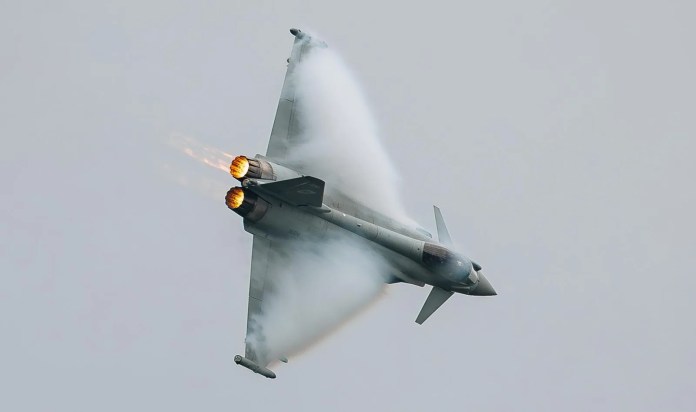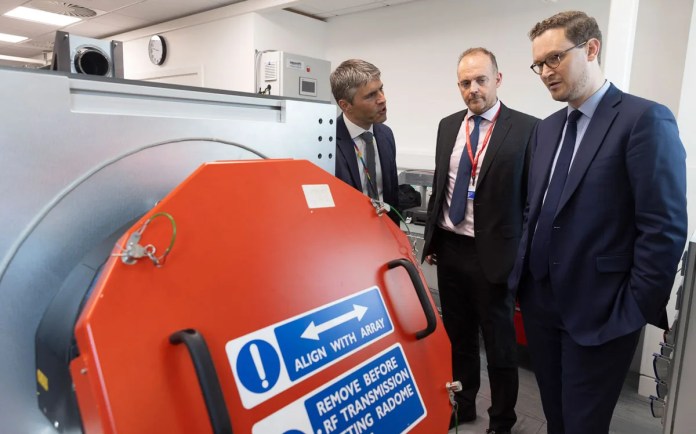The UK Government has announced a decisive step in the modernization of the Royal Air Force’s (RAF) combat fleet: the release of £204.6 million for the production and integration of the new ECRS Mk2 (European Common Radar System) AESA radar, which will equip Eurofighter Typhoon aircraft.
The announcement was made by Chief Secretary to the Treasury, MP Darren Jones, during a visit to Leonardo’s facilities in Edinburgh—one of the companies responsible for the radar’s development, alongside BAE Systems, which is handling aircraft integration from its site in Lancashire. The project is a cornerstone of the “Phase 4 Enhancement” (P4E) upgrade program and marks a major technological leap in electronic warfare for the RAF.

The ECRS Mk2 is a next-generation multifunction radar that will enable the Typhoon to detect, identify, and track multiple targets simultaneously in both air and land domains. It will also include embedded electronic suppression of enemy air defences (SEAD) capabilities, making it the first radar in Europe to offer this feature integrated into a wideband radar array.
This funding release follows several months of collaborative work between Leonardo and BAE Systems, and comes after a successful series of flight tests completed in late September 2024. At the time, the UK Minister for Defence stated, “This flight marks a milestone in the UK’s ongoing Typhoon development program, reinforcing its ability to control the airspace. It will also deliver advanced electronic warfare capabilities, further cementing its role as a vital frontline NATO asset.” She added: “The first flight is the result of an integration and ground test program carried out through successful collaboration between the UK Ministry of Defence’s Defence Equipment and Support (DE&S), the RAF, and leading industry partners BAE Systems and Leonardo.”

According to the government, the first production radars are expected to be ready for integration starting in 2028, with entry into service scheduled before the end of the decade. Flight testing of a prototype installed on an RAF Typhoon began in autumn 2024 and concluded successfully in February this year.
The newly approved funding will secure critical components for radar manufacturing, leveraging a supply chain distributed across the UK. The project is estimated to support 600 direct jobs, including more than 400 at Leonardo and 120 at BAE Systems, with a particularly significant impact in Scotland and the North West of England. In the long term, the full modernization program could sustain up to 1,300 highly skilled jobs over the next decade.
During his visit, Jones also met with young apprentices from Leonardo involved in STEM education and technical training programs, highlighting the industry’s commitment to talent development and innovation as pillars of national security.

“With modern conflicts highlighting the importance of electronic warfare, we are proud to deliver Europe’s first radar with embedded SEAD capabilities in a multifunction array,” said Mark Hamilton, Managing Director of Electronics UK at Leonardo. “Our development is several years ahead of other international efforts.” Richard Hamilton of BAE Systems added, “This commitment ensures the RAF retains its operational edge and preserves the UK’s sovereign combat air skills.”
Lyndon Hoyle, head of the Typhoon delivery team at the Ministry of Defence, emphasized, “The UK’s commitment to these initial packages reflects growing confidence in the system’s progress and maturity.”
With this investment, the UK not only strengthens its air combat capability but also reaffirms its industrial and technological leadership in European air defence.
Images courtesy of Leonardo UK.
You may also like: The integration of the MBDA Meteor BVR missiles into the Royal Air Force’s stealth F-35B fighters is facing new issues and delays
